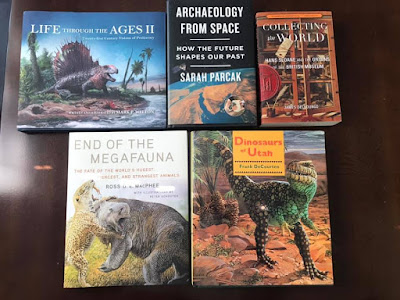Here’s a post about modern veterinary medicine and surgery, featuring my own dog, Pippin. Pippin is a 12-year-old neutered male Pembroke Welsh Corgi. Back in January 2020 I had him at work for a “dental.” I put that term in quotes; many pet owners and veterinary professionals use “dental” as a noun to describe a full dental procedure under anesthesia. But we’re trying to get away from using that term and instead using a term that more fully describes the procedure. At my hospital we call it an Oral ATP = oral assessment, treatment, and prevention. Other terms/acronyms are COHAT = complete oral health assessment and treatment, or OAT = oral assessment and treatment. Regardless of what you call it, it involves putting the pet under general anesthesia with an endotracheal tube in the trachea to provide ventilation and protect the airway, full-mouth radiographs (x-rays), scaling off the calculus (tartar), probing around each tooth for periodontal (gum) disease, and polishing the teeth.
Some places offer what’s called a “non-anesthetic dental” or NAD, but I do not recommend those. Basically it involves a technician scaling and polishing the teeth with the pet awake. The American Animal Hospital Association and the American Veterinary Dental College have both taken positions against NAD’s. When I talk to pet owners about NAD’s, I make these points:
- I hate going to the dentist. Scaling and polishing makes my anxiety spike and my head hurt. I’m a human and understand why I need to go to the dentist—pets don’t understand why they’re being held and someone is poking their mouth.
- Even the calmest pet will not allow full-mouth radiographs (x-rays) awake. Radiographs are absolutely necessary to look for pathology under the gumline, like abscesses, fractures, congenital abnormalities, or tumors.
Which brings us back to Pippin. His mouth looked fine; in the photo he is missing the upper tooth because he fractured it years ago and I extracted it.
But on Pippin’s radiographs, I saw this splotchy black spot in the jaw around his lower left second and third molars (equivalent to our wisdom teeth).
My doctor brain and my pet owner brain started panicking.
Maybe it’s a congenital cyst? No, I’ve done radiographs on him multiple times in the past and that was never there before.
Maybe it’s an abscess? No, the black splotches are more diffuse and between the teeth, not centered around the tip of the root like an abscess would be.
Ugh, I think it’s cancer.
So I extracted the middle tooth and the surrounding bone and sent the chunk to the pathologist. The biopsy results came back as a sarcoma, or cancer. I took Pippin to a local specialty veterinary hospital where a board-certified veterinary dentist evaluated him. She did a CT scan of his head to see the extent of the tumor. These pictures show a generic dog skull with the location of the tumor in purple. The orange is the extent of the jaw that needed to be removed.



Any time veterinarians or physicians are doing surgery to remove a cancer, you need to remove a margin of what appears to be normal tissue on all sides of the tumor. The reason for that is that cancer can be like an octopus—the tumor that you see with your eyes or x-rays or CT is the body of the octopus, but microscopic tumor cells can extend out like the arms of the octopus. To make sure you remove the entire tumor, you have to take at least a half-inch of healthy tissue on every side. In Pippin’s case, that meant such a large chunk behind the tumor that there was no point in leaving the ramus of the mandible, the part of the jaw that takes a left turn up to the joint with the skull.
A week or two later, Pippin had a caudal mandibulectomy. His surgeon removed the whole back half of his jaw and sutured the soft tissues together. He spent the night at the specialty hospital on heavy pain management. He was pretty sad for a couple days after coming home, with some swelling and oozing. The final biopsy report on the jaw was a fibrosarcoma, a potentially malignant cancer with a small (<20%) chance of metastasizing to other areas of the body.
 |
| First night home, in the "cone of shame" |
 |
To access the whole jaw and TMJ joint, his surgeon had to cut back from the corner of his mouth and then suture it back together.
|
 |
A month after surgery, back to chewing on sticks!
|
 |
Because there isn't actually any bone attachment on his left side, sometimes his jaw slides over to the side because of scar tissue. In this photo, you can see that his bottom jaw doesn't line up with his upper jaw. But the jaw only slides when he's being lazy; he can move it back into position when he wants to chew on a toy or eat dinner.
|
 |
So far, so good! Here's Pippin on a family camping trip in August 2020. He's still feeling well now in November 2020.
|

















































